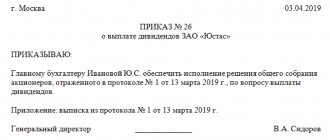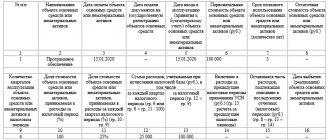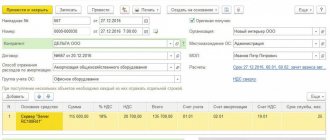Purposes of each type of accounting
Accounting records transactions and transactions, financial results and cash flows.
It gives a rough idea of what is happening in the business. The main goal of an accountant is to correctly calculate taxes and report on the financial position of the organization on time. Accounting is focused on the past, since accounting works only with what has already happened or is happening now. It is unlikely that your accountant will predict revenue for at least the next month. Accounting does not have this capability, so it is not suitable for management.
Management accounting is aimed at operational analysis, understanding the state of affairs and planning further work.
It is important for management to collect information to make decisions that will help gain benefits in the future. Analysis of past periods helps to see the factors affecting the organization and predict the level of profit and loss in the future. The dynamics are monitored by three basic management reports:
- about cash flow;
- about financial results;
- forecast balance.
Concepts of accounting and management accounting
To understand the main differences between accounting and management accounting, we will use theoretical data.
Accounting is a unified system for preparing information about the state of debt, liabilities and capital of an organization in financial terms through a continuous and documented reflection of the facts of all economic activities of the company.
In this case, the objects of accounting are both the organization’s property and its obligations, as well as all business transactions carried out in the process of work.
You can read more about the goals and principles of accounting in the “Accounting” section.
The main purpose of financial accounting is to obtain general real information about the work of the company and its financial status. Based on the actual activity, it will be possible to control the feasibility of business operations, the availability and movement of capital, debt, and the use of enterprise resources.
The users of the company's financial accounting results will be the managers, founders, participants and owners of the organization's capital. External users will be government agencies, investors, auditors, and creditors.
For more information about users of financial statements, see the article “PBU 4/99 - financial statements of an organization (nuances).”
Management accounting is a generalized system of collecting, recording, interpreting, preparing and providing users with the necessary information for making decisions on the activities of the organization. The main task of management accounting is a detailed analysis of the facts of the company’s activities to determine the state of the company’s current affairs.
As can be seen from the above, the two types of accounting systems are different. Let's look at this in more detail.
You will find a sample accounting policy for management accounting purposes in ConsultantPlus. It is fashionable to get trial access to the legal system for free.
Open data and trade secrets in accounting
Accounting is needed by tax authorities, statistics services, suppliers and other external users. Accounting data is no secret. They are even published publicly on the statistics website.
Management accounting is maintained for internal use by the director, manager or owner. Its data often becomes a trade secret, so even within the organization not everyone has access to it.
Keep records of exports and imports in the Kontur.Accounting web service. Simple accounting, payroll and reporting in one service
Basic principles of policy for organizing a management accounting system
The organization of management accounting is based on certain principles of the company’s management policy. These include:
- Frequency corresponding to production cycles.
- Continuity of information and its repeated use.
- Formation of reporting indicators acceptable for all levels of management.
- Application of budgeting.
- Evaluation of the performance of individual structural divisions (CFD).
- Reliability, completeness, efficiency of information, possibility of analysis.
- Use of common units of measurement.
Fixed and free forms of accounting
Accounting requirements are defined in detail: it is regulated by laws, regulations, standards, tax clarifications and other documents. The deadlines for compiling and the form of reporting are strictly defined. Accounting is mandatory for all organizations; you simply have no choice whether to do it or not.
Management accounting is simply your right. It is not subject to rules from above; it can be conducted in a way that is convenient for you, based on the specifics of the activity and your own goals. The main thing is that you understand the reports and indicators yourself. The frequency of compilation can be any: week, quarter or even year.
How management accounting is established - 5 main stages
Now we will describe in detail how to organize management accounting.
For clarity, I have compiled a step-by-step algorithm of actions.
Stage 1. Determination of the main consumers of management accounting data
The main customers and recipients of management accounting information are company executives and members of the board of directors, managers at various levels, since they make major business decisions.
If you need to explain to decision makers the essence of a problem or some action plan, then the best way is to prepare a presentation to present the information clearly and in a structured manner.
Stage 2. Formation of a list of required reporting
Next, it is necessary to create and agree with all interested parties a list of management reporting documents - that is, the reports themselves that are to be drawn up. For each report, it is determined when and with what frequency it will be submitted - a clear and detailed description is made.
Stage 3. Preparing a sketch of the methodology
The creation of a management accounting system is carried out by specialists who delve into all the intricacies of the company’s activities. Otherwise, there is a risk that the management reporting system will not meet its implementation goals and will not bring the desired results.
What needs to be done at this stage:
- identify reporting blocks and accounting areas;
- develop interim reporting documents and calculation methods;
- determine methods for entering and processing information into the system;
- ensure effective data control;
- distribute responsibilities among specialists who perform data preparation;
- prepare a test version of the methodology and make trial calculations;
- evaluate the feasibility of the developed draft methodology.
Then the prepared model is approved by the company management.
Stage 4. Introduction of management accounting methodology
If all previous activities have been successful, the management accounting system is put into operation.
The implementation of a management accounting project will reveal shortcomings made in the preparation of the methodology. Perhaps this will be a heterogeneous approach of different departments to data processing, or inconsistency of information intersecting in different reports, or imperfect software, etc.
There may also be other overlaps in the interaction between departments.
Example
At the ChelyabinskStroyMotazh , problems arose with the reliability of information about the sale of goods.
During the audit, it turned out that the accounting department did not timely enter information about received funds into the database. Because of this, the closure of the institution’s balance sheet was delayed.
Stage 5. Organization of control over the implementation of the management accounting system
An important part of control is to evaluate how cost-effective the selected management accounting system is. But first you need to make sure that all performers are trained, the goals are clear, and there are no errors in the methodology.
Continuing the topic, we offer some practical advice from an expert.
The reality of data in accounting
We reflect in accounting what is written in the contract. And in management accounting we focus on the real meaning of the operation.
For example, sale with subsequent repurchase: the contract is concluded with the condition that the seller can buy the goods from the buyer at any time and retains all the risks and benefits of owning the goods. Such a transaction is a disguised loan or financing. There is no point in recognizing revenue from such a transaction in management accounting, since the revenue figure will be higher than in reality. But in accounting you will have to do this.
The main differences between accounting and management accounting
Accounting and management accounting exist for different purposes, and this is their main difference from each other. The purpose of accounting is to record the facts of economic activity to control the life of the enterprise. The purpose of management accounting is operational analysis and planning of activities.
Due to different goals, further differences arise.
1. The main difference is the end user of information. If the balance sheet is more interesting to management when assessing activities over the past period, to the tax service to analyze profitability, to auditors to check the reflection of the facts of economic activity, then management accounting data is needed only by the managers of the enterprise for short-term and long-term planning of activities.
2. Accounting methods differ. When creating accounting entries, the accountant will be guided by PBUs and other regulations. When generating operational data for management accounting, it is necessary to rely on the instructions of the manager to which item of income or expense this or that figure belongs. So, for example, labor costs for the IT department in accounting will simply be charged to account 26 under the item “Salaries”, but in management accounting more detailed information “Salaries” - “IT Department” is required. That is, we come to the conclusion that management accounting should be more detailed.
3. The reports will also be different. If in accounting the reporting forms are strictly regulated, then in management the provision of information can be in any form convenient for users.
Read more about the deadlines for preparing and submitting financial statements in the section “Accounting statements of the organization.”
4. Time frames for providing information vary. The accounting report will be submitted within the deadlines established by law, while management reporting is generated in those periods that are needed by management personnel. For example, in production, data on production output and cost in accounting will be visible at the end of the month, after all costs have been calculated and the final cost of goods has been formed, while in management accounting these reports are needed on a daily basis at planned prices to analyze the plan and make timely adjustments.
The right level of detail
Accounting evaluates the entire enterprise and combines information about all departments, products, and employees.
Management accounting can look at the entire company or individual divisions - in depth and in more detail. This allows you to better understand the business from the inside and know what is happening in it and why. You see not just the overall flow of funds in the company, but also indicators by department and even employee. Not just see the profit, but understand its sources. Don’t just take into account goods, but divide them into groups and types.
Management accounting methods
The primary task of management accounting was to determine profitability, and, accordingly, to determine costs with cost calculation. An enterprise must choose for itself the most suitable method for the specifics of its activities or create its own method, assembled from several methods, taking into account the requirements for management accounting described above. One of the main problems solved by the methods is the distribution of costs among management accounting objects.
Management accounting has the following methods:
- Process method. A link is a group of production processes for a certain period, used for the production of homogeneous serial products or in a continuous production cycle. Costs are recorded for a period in relation to the products produced during it.
- Transverse method. With its help, accounting works in mass production, where the continuous transformation of raw materials and semi-finished products into finished products occurs. Processing stages are characterized by the release of various goods - semi-finished products, which can be either used at your enterprise or sold on the market. One example is chemical production;
- Custom method. With it, a separate order and a separate, special, non-standard specification are drawn up for each product. Expenses for raw materials, semi-finished products, expended labor, semi-fixed costs, general business expenses are charged to each individual order or series of goods;
- Standard cost calculation. For each product, cost norms are used to calculate the planned calculation of standard costs, and after the product is created, the deviations that have occurred are calculated, both negative, associated with overruns, and positive, due to savings, while there may also be conditional deviations that appear as a result of methodological differences;
- Inventory-index method of cost accounting. The difference from the previous method is that cost accounting for the period is carried out without norms and deviations, on the basis of periodic inventory and assessment of work in progress balances.
- Calculation of cost by type of activity - ABC (Activity-Based Costing). General expenses, which obviously do not transfer their value to a specific product, are carried out by linking the company’s costs for all types of resources used in production. Proportionality to the hours of loading equipment, the use of personnel labor are examples of the application of the method. There are distributions of costs based on existing dependencies, which are clarified during the application of the method.
- Costing based on life cycle – Lifecycle Costing. When producing a product, not only the usual direct and indirect costs are taken into account, but also the costs of research, design and development, efforts to research markets, sell the product, as well as service costs after the product is transferred to the buyer, costs of withdrawing the product from the market and even the disposal of used products, equipment for their production - in fact, the entire life cycle of the product. The goal during the application of this method is to optimize costs, and, consequently, the efficiency of production of such a product;
- Direct Costing. When using it, costs are divided into fixed and variable. The cost of production is determined based on variable costs, and fixed costs are included in the total amount. Based on the varying degrees and gradations of cost variability, a whole system of marginal income can be calculated;
- Target costing – Target Costing. Cost is determined based on the planned selling price and projected product margins. This method is the opposite of kaizen costing in terms of application, since it takes place during product design, and kaizen costing occurs during production. In management accounting, this method is used in a ready-to-use set of target indicators. The calculations themselves take place outside the boundaries of management accounting itself, and here we move, in a sense, to strategic management, which is even more clearly shown in the next method;
- BSC (Balanced Scorecard) - balanced scorecard (BSC). This management accounting system was based on the management of key business processes, which in the original form of the first generation BSC were divided into four perspectives: financial, customer, internal business processes, learning and growth. At this point, the third generation of the BSC is already in use, which uses a Vision Statement, a Model of Strategic Links, a Set of Definitions for each of the strategic goals, and a Set of Definitions for each designated dimension. At the moment, this BSC method allows the use of management accounting to assess the interaction of internal processes and external conditions of the enterprise. An alternative, but also complementary at the same time, option for the BSC method is the KPI method, the method of key performance indicators.
The choice of methods is carried out by the management of the enterprise, based on the functional specifics and structure of the activity in order to obtain an effective economic and managerial tool suitable for the scale of the enterprise, its capabilities in terms of management accounting and automation. The methods provide a way to achieve the previously selected strategic goals and objectives of the enterprise, while they work as a transmission link from the strategy adopted within the board to the daily operational activities of each department and employee. Along with financial indicators of value, non-financial quantitative and qualitative indicators have recently been used.
Free consultation on organizing management accounting in 1C
Metrics to Track
Accounting is carried out in monetary terms and is governed by numbers. Management accounting includes natural and even verbal indicators: the number of defects, productivity, customer and employee satisfaction, staff turnover, average order size and others. These indicators affect the business just as much as numbers, so they need to be monitored and adjusted. Often this becomes the main tool in optimizing the operation of the entire enterprise.
A web service for small businesses, Kontur.Accounting, helps you keep records, pay salaries and submit reports, and also generates five management reports. Monitor business development and automate routine accounting operations. All new users can get acquainted with the system and work in Accounting for free for two weeks.
Stages of setting up, implementing and automating management accounting
The basic stages include the establishment of management accounting, which consists in the development of regulations, rules and regulations, its implementation in the daily activities of the organization and automation using one or more software solutions. But if you take not only directly ex. accounting, but also its context, the picture will be both more complete and more contradictory. These stages are as follows:
- Identification of key persons, customers and their needs in managing an organization or enterprise.
- Analysis of their needs with the transition through taking into account the existing management system to the requirements.
- Formalization of the goals and objectives of the enterprise.
- Setting up strategic management of the enterprise.
- Description of the company’s economic activities, the enterprise’s value chain
- Description of the existing structure of the enterprise from an economic, functional point of view
- Determination of requirements for the content of the enterprise’s activities, its structure and functional units
- Methodological creation of management accounting, its basic units, categories used, relationships, parameters, performance indicators
- Development of regulations and regulations for management accounting
- Development of management accounting policies
- Formal acceptance of previously created documents
- Introduction of management accounting documentation into the daily practice of the company
- Preparation of the Concept for automation of management accounting
- Development of Terms of Reference for automation of management accounting
- Actual work on automation of management accounting
- User training, documentation, completion of work and operational acceptance testing.
Points one through four precede management accounting itself, creating the prerequisites for a situation where management accounting generally makes sense to implement. Points five to ten decipher the stage of establishing management accounting, and the next two points talk about its implementation. The last four items on the list are dedicated to automation.
Let's take a closer look at these stages:
Identification of key persons, customers and their needs in enterprise management
Are key persons and potential customers aware of their need for management accounting? Objectively, it may indeed already be needed, but if there is no subjective awareness, complete inclusion in the situation, then it is pointless to do anything without resolving this problem. There may be many key persons in an enterprise, their interests are different, but at this stage, what is important is awareness and a request for change, even if it is not clearly formulated for now.
Analysis of their needs with transition through taking into account the existing management system to requirements
Surveying and interviewing key stakeholders and collating the collected data allows them to be analyzed, highlighting both the typical and the special in their requests. The ability to respond to their requests through the accounting used, to the extent it is sufficient to meet needs, is also analyzed. If there is a lack of opportunities provided to them, it is necessary to further formulate the requirements for management accounting, consolidated into a single system, indicating priorities and emphasis.
Automation of management accounting
Transparent management reporting just in time
Learn more
Financier. Management Accounting
A modern, highly customizable management accounting system.
Order demo access. To learn more
Formalization of the goals and objectives of the enterprise
It is important to correlate management accounting requests with the company’s goals and strategy. After all, this type of accounting is a system for tracking and issuing decisions in connection with the implementation of the strategy. It’s a good idea to start by formulating the goals and objectives of the enterprise for the foreseeable future in order to have points of support in building and operating a management accounting system. At the same time, it is necessary to ensure that the tasks have clearly defined criteria for their solution.
Setting up strategic management of the enterprise
The implementation of goals and objectives requires an appropriate management system, in this case a strategic one, operating not with operational management cycles, but with strategic long-term periods. In a word, here we are building not a management system, but a governance system in order to consistently update both the strategy and the emphasis in its implementation, taking into account other types of business and the interests of key persons who are formally outside the scope of the project, but in fact affecting the enterprise constantly. The strategic management system implies permanent strategic analysis.
Description of the company’s economic activities, the enterprise’s value chain
The enterprise is a participant in the value chain; often many enterprises do not have the entire chain within its operating cycle, since they produce semi-finished products and components for manufacturers whose products are already directly consumed by end consumers. However, the value chain runs like a red thread through all the activities of the enterprise, since in the economic sense the enterprise does not produce anything other than value. The uniqueness of this chain determines the objective features and characteristics of the management accounting system.
Description of the existing structure of the enterprise from an economic, functional point of view
Describing the functional structure of an enterprise, we describe its key series of processes, combined into levels: auxiliary, main operating, managerial, strategic. When describing it, gaps and contradictions in it are usually revealed that require resolution.
Determination of requirements for the content of the enterprise’s activities, its structure and functional units
The description of the current structure and the identified shortcomings lead to the need for changes in the organizational structure of the enterprise, and in many aspects. Clarification of powers and responsibilities, delegation and narrowing of rights, elimination of duplication and the emergence of new functions - this is what happens at this stage.
A functional structure is being developed, which is the starting point for the financial, project, product, channel and other structures of the enterprise. Matrices of interaction and intersection of areas of responsibility are integral components of this area.
Methodological creation of management accounting, its basic units, categories used, relationships, performance indicators
One of the main stages of establishing management accounting, with its help we structurally describe the management accounting system. The transition from requirements to system units is not so simple, since the requirements are contradictory, often set by different stakeholders, but the structure and its component parts must be free from these contradictions. The described structure assumes in its structure those reports that can be requested in the system.
Development of management accounting policies
Management accounting policies determine the basic characteristics of management accounting. Methodological concepts and essential characteristics of the management accounting system are embodied here. All activities are analyzed down to the primary operations with their decoding. A control system is also formulated to verify the entered data, prevent input errors and formulate control points.
Development of regulations and regulations for management accounting
What forms, when and who fills them out, agrees on what they do in accordance with them, what reports, analytical notes are created and with what frequency. How data is collected and recorded, how it is stored. Many of these and other questions find their answers at this stage.
Formal acceptance of previously created documents
This important act in the form of signing orders for the introduction of management accounting can take literally a few minutes. But it is he who gives rise to changes that took place only on paper earlier, into the life of the company, the daily activities of its employees, transformations in reporting forms, the emergence of new divisions and functions in connection with management accounting.
Introduction of management accounting documentation into the daily practice of the company
One of the longest stages, whose duration can overlap other stages many times over. This is the stage of the integration of management accounting practice into the organizational culture of the company, consolidation in the skills of the staff.
Preparation of the Concept for automation of management accounting
Automation can also go in parallel with implementation. The Concept provides answers to questions based on the formulated needs, created documentation, and how exactly the automated management accounting system will work in general.
Development of Terms of Reference for automation of management accounting
The main purpose of the technical specification is to be the basis for setting up and programming the system; clearly formulated requirements and structures make it possible to analyze available software solutions, identify and evaluate improvements, after which the choice of software platform, configuration and transition to the actual development occurs.
Management accounting in “WA: Financier” (1C platform - a modern solution
- a modern solution
As a company develops, its organizational structure becomes more complex, and the volume of information processed increases. There is a need to automate processes. Effective organization of a management system is inevitably associated with the use of various software products. A significant number of business transactions, a large range of goods, a large list of counterparties - this is a small part of the list of criteria that contribute to the complexity of the process.
In the first stages after the creation of an enterprise in Moscow or another city in Russia, management accounting can be carried out using simple EXEL tables. This approach is effective for small volumes of business transactions. It is quite natural that with a small amount of start-up capital, small enterprises resort to methods that can be obtained for free. As a company grows, not only the number of business transactions that can be processed increases, but also the amount of capital that can be invested in information technology and software. Special programs provide systematization and efficiency of obtaining information. The most popular solution to the problem is the implementation of management accounting tools in “WA: Financier”.
Large companies use ERP systems that allow them to maintain all types of accounting simultaneously. But such solutions are very expensive.
Conducting forecasting at an enterprise using automated management accounting allows you to quickly process significant amounts of information. In combination with additional modules, the system's functions can be expanded. Users receive a number of benefits:
- a wide range of tools for accounting and control, allowing you to quickly obtain information and analyze it from various angles;
- the systems and modules used are easily customizable in accordance with the accounting policy and specifics of the company’s activities;
- High performance of automation tools allows you to instantly process significant amounts of information.
Rules promoting the effective implementation of management accounting in an enterprise
Automation of management accounting should be a systematic process. In practice, when solving this problem, company managers even in Moscow, the center of concentration of business information, make a number of typical mistakes, the correction of which leads to additional financial costs and loss of time. To avoid such problems, keep the following rules in mind.
1. Internal management reports should contain only the necessary information and be in a form that is easy to understand. They should be structured, easy to read, and visual. They should include only those details that are necessary for management purposes. This approach not only reduces document processing time, but also makes them more informative and useful.
2. The assessment of reporting elements should be made not only on the basis of financial methods, but also using other methodologies. When creating rules, international standards should be used along with Russian rules.
3. Effective implementation of automation of management accounting can be carried out only after a detailed diagnosis of the company and carrying out explanatory work among managers about the need for such an action.
4. A significant number of employees should be involved in the process of creating management accounting, since a fairly wide range of personnel will use the information base for the purpose of managing and implementing the sales process. This task cannot be entrusted only to accountants, economists and financiers.
5. When implementing automation of management accounting, it is necessary to accurately determine the scheme of business processes, optimize it and distribute functions, create job descriptions. This approach will avoid duplication of functions.
6. The introduction of management accounting involves solving a whole range of problems in order to increase the efficiency and quality of management and improve performance results in all areas. Therefore, it cannot be focused on solving a single problem. For example, ensuring document flow.
7. The process of improving the formation of management accounting should be permanent. It is impossible to allow optimization carried out once to be considered a sufficient action. The system must be regularly improved, new software products introduced and innovative methodologies used.
8. It is necessary to create document flow regulations that specify the deadlines for submitting documents, submitting reports, and motivating staff for compliance with the rules. A document flow schedule can be an effective solution.
9. Corporate culture involves the exchange of information within precisely defined time frames. The introduction of information technology makes it possible to effectively implement this process.
10. Management accounting tools must correspond to the tasks set by the company. Limitation of capabilities due to technical factors should not cause additional problems at the enterprise.
Enterprise Forecasting
The formation of a budget model depends on the specifics and type of activity of the enterprise. But the same principles are still used in its creation.
1. Budgetary integration. To ensure planning efficiency, a significant number of types of budgets can be created: operational and financial. They can be formed for each Central Federal District individually. But they are all interconnected and combined into a common budget system. The master plan is the company's consolidated budget.
2. The principle of consistency. All budgets are drawn up in accordance with certain regulations and are interconnected with each other. The primary ones are operating budgets, the indicators of which are summarized in the overall Budget of Income and Expenses, sometimes called the Profit and Loss Budget. On its basis, financial types of budgets are compiled: cash flow budget, forecast balance, capital budget.
3. The budgeting system is implemented on the basis of regulations (certain norms and standards).
4. End-to-end budgeting. The consolidated budget combines all types of enterprise plans, all of them are interconnected with each other.
5. Methodological comparability. When drawing up all types of budgets, uniform methodologies and approaches are used. This is necessary in order to carry out qualitative analysis and control over the implementation of plans based on comparable indicators.








